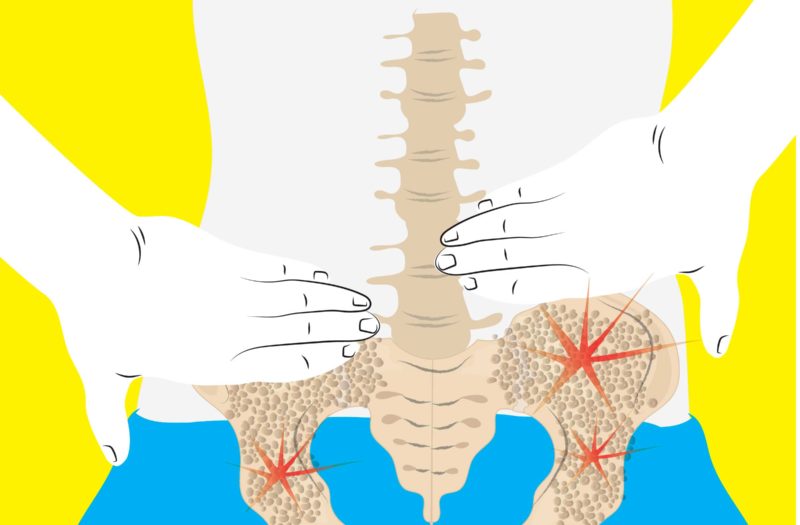The bone-building osteoporosis drug romosozumab (Evenity) significantly improves bone mineral density in the hip and lumbar spine within one year, according to new research. What’s more, when patients transition to a potent antiresorptive drug after taking romosozumab, they experience even more bone density gains.
A loss of bone mass, measured by bone mineral density, and a change in bone structure leads to osteoporosis. Bone is constantly in a state of regeneration, as the body removes old bone (known as bone resorption) and replaces it with new bone (bone formation).
Previous research has shown that teriparatide, another type of bone-building medication, boosts bone mineral density in the spine and hip when followed by an antiresorptive drug.
However, when the antiresorptive drugs are administered first (particularly denosumab and bisphosphonates like alendronate), a patient’s hip bone mineral density may decline.
In a new study presented at ACR Convergence 2020, the annual meeting of the American College of Rheumatology, researchers reviewed results from four recent, large-scale trials to determine how romosozumab may be given in sequence with antiresorptive drugs. (These are osteoporosis medications that work differently from romosozumab.)
They found that osteoporosis patients showed significantly different results when they received romosozumab before an antiresorptive treatment compared to receiving it after.
Effects on the Hips
When patients were administered bone-building romosozumab before an antiresorptive treatment, their total hip bone mineral density increased by 6 percent in one study and 6.2 percent in another study over a year of treatment.
Similarly, the total hip bone mineral density gain was 7.1 percent when patients were administered romosozumab before alendronate (Fosamax) over two years of treatment. When they were administered romosozumab before denosumab (Prolia), total hip bone mineral density gain was 8.5 percent over two years.
However, when patients took the antiresorptive drug alendronate first, total hip bone mineral density increased by just 2.9 percent with romosozumab treatment. When they received the antiresorptive drug denosumab first, total hip bone mineral density increased by only 0.9 percent.
And over the course of two years, total hip bone mineral density gain was just 3.8 percent when patients were administered romosozumab after denosumab — less than half of when romosozumab was given first.
Effects on the Spine
The researchers found similar results on bone density in the lumbar spine. When patients were administered romosozumab before antiresorptive drugs, their spine bone mineral density increased by 13.7 percent in one study and 13.1 percent in the other study over the course of a year.
Similarly, over two years, receiving romosozumab before alendronate led to a bone mineral density gain of 15.2 percent. When patients received romosozumab before denosumab, the gain was 16.6 percent.
However, when patients took alendronate first, the lumbar spine bone mineral density gain was just 9.8 percent over the course of a year. When they received denosumab first, it was only 5.3 percent.
And over the course of two years, spine bone mineral density gain was just 11.5 percent when patients received denosumab before romosozumab.
What the Results Mean
These results may have important implications for patients, especially women who have had recent or multiple fractures in adulthood, since they are at high risk for more.
“These women need medication that can build bone mineral density fast to improve bone strength and reduce the risk of fractures,” the study’s coauthor, Felicia Cosman, MD, Professor of Medicine at Columbia University College of Physician and Surgeons in New York City, said in a statement. “The standard approach that most health care providers use is to start treatment with antiresorptive medicine. However, bone-building agents like romosozumab, abaloparatide, and teriparatide reduce fracture risk faster than antiresorptive medicines.”
The results of this study could help doctors and osteoporosis patients make more effective preventive treatment choices.
“There are about two million fractures every year from osteoporosis,” said Dr. Cosman. “Patients need to know that the best option for them might be to receive a bone-building medication first, rather than an antiresorptive treatment.”
Amgen Inc., which manufactures romosozumab (Evenity), is a corporate sponsor of the Global Healthy Living Foundation.
Be Part of Research with ArthritisPower
Join CreakyJoints’ patient-centered research registry and participate in voluntary studies about managing arthritis. Learn more and sign up here.
Cosman F, et al. Treatment Sequences with Romosozumab Before or After Antiresorptive Medication. Arthritis & Rheumatology. Accessed October 31, 2020. https://acrabstracts.org/abstract/treatment-sequences-with-romosozumab-before-or-after-antiresorptive-medication/.






